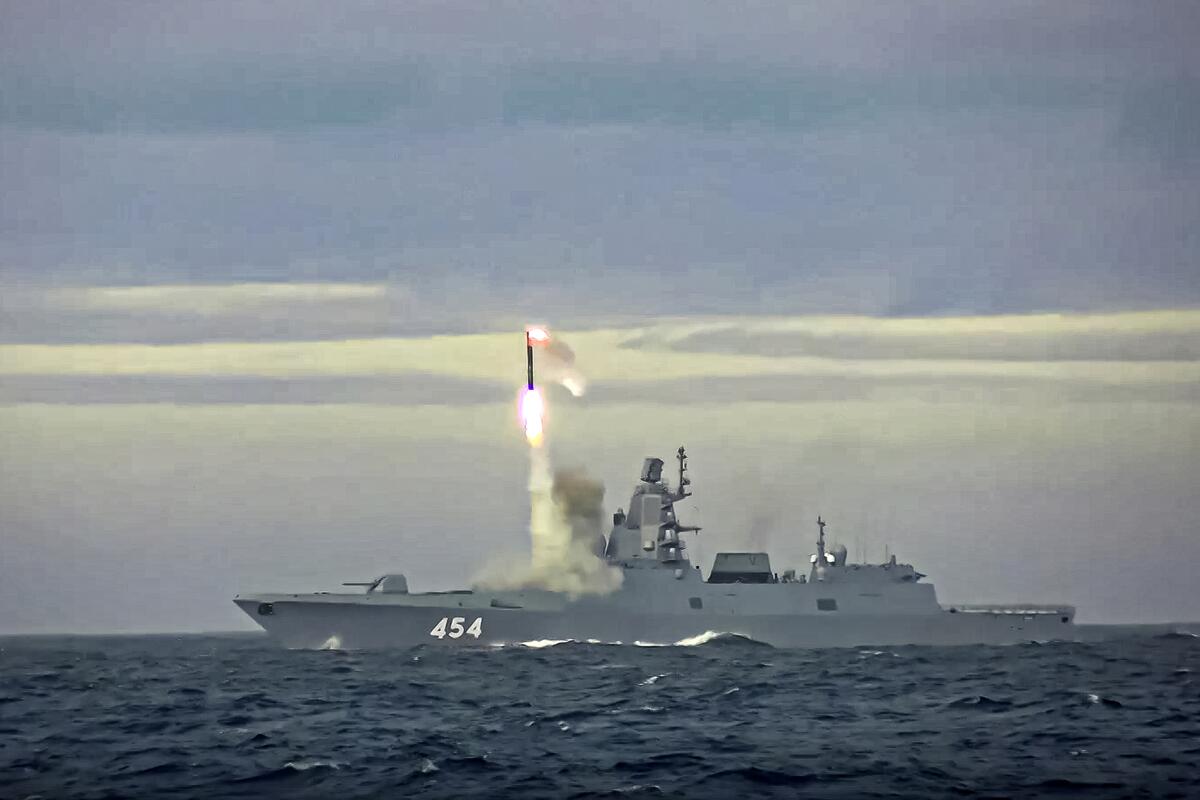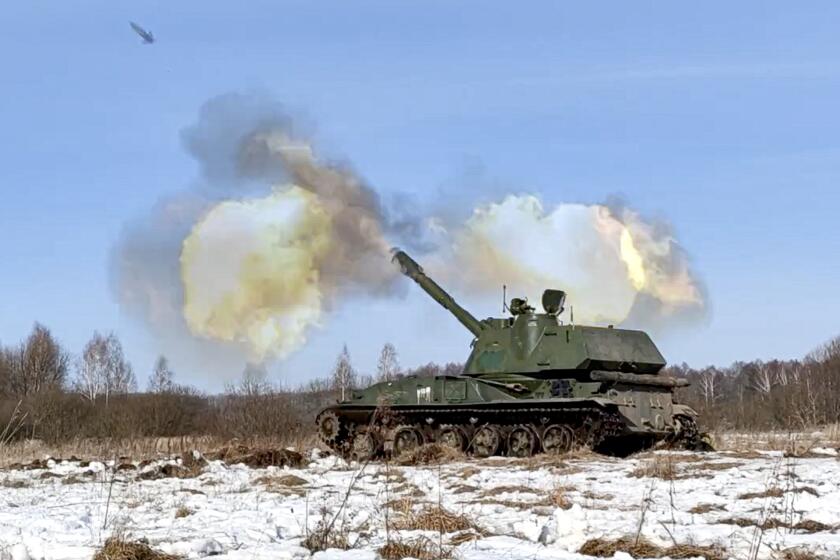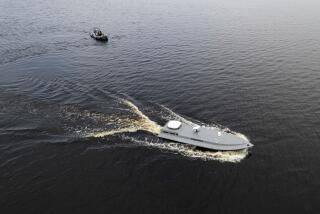In show of force, Russia sends ship armed with hypersonic missiles into global waters

- Share via
Russian President Vladimir Putin on Wednesday sent a frigate armed with the country’s latest Zircon hypersonic missile on a transoceanic cruise in a show of force as tensions with the West escalate over the war in Ukraine.
Russia claims that the Zircon missile can evade any Western air defenses by flying at an astounding 7,000 mph.
Here is a glance at the ship and its weapons.
The pride of the Russian navy
Commissioned by the navy in 2018 following long trials, the Admiral Gorshkov is the first ship in the new series of frigates designed to replace aging Soviet-built destroyers as a key strike component of the Russian navy.
Armed with an array of missiles, the ship is 427 feet long and has a crew of about 200.
In 2019, it circled the world’s oceans on a 35,000-nautical-mile journey.
Intensive tests
The Admiral Gorshkov has served as the main test-bed for the latest Russian hypersonic missile, the Zircon.
Hypersonic missiles fly so fast — many times the speed of sound — that they are almost impossible to detect by most air-defense systems.
In recent years, the Zircon has undergone a series of tests, including being launched at various practice targets. The military declared the tests successful, and Zircon officially entered service last fall.
Zircon is intended to arm Russian cruisers, frigates and submarines and could be used against both enemy ships and ground targets. It is one of several hypersonic missiles that Russia has developed.
The new weapon
Putin has hailed the Zircon as a potent weapon capable of penetrating any existing anti-missile defenses by flying nine times faster than the speed of sound at a range of more than 620 miles.
Putin has emphasized that the Zircon gives the Russian military a long-range conventional strike capability, allowing it to strike any enemy targets with precision.
Russia’s hypersonic weapons drive emerged as the U.S. has been working on its own Conventional Prompt Global Strike capability, which envisions hitting an adversary’s strategic targets with precision-guided conventional weapons anywhere in the world within one hour.
The longer Russia’s invasion of Ukraine lasts, the more likely that drones will be used to identify and attack targets without human aid, experts say.
Putin heralded the Zircon as Russia’s answer to that, claiming that the new weapon has no rival, giving Russia a strategic edge.
Months before ordering the invasion of Ukraine, Putin put the U.S. and its NATO allies on notice when he warned that Russian warships armed with the Zircon would give Russia a capability to strike the adversary’s “decision-making centers” within minutes if deployed in neutral waters.
Speaking via video link during Wednesday’s send-off ceremony, Putin again praised the Zircon as a “unique weapon” without an “equivalent for it in any country in the world.”
In response, the Pentagon said it was monitoring the ship, and did not think it presented a threat that could not be countered.
“We will continue to routinely monitor its activities as we maintain awareness of our operating environment,” said Pentagon spokesman Army Col. Roger Cabiness. “While we do not comment on specific capabilities or speculate on hypotheticals, the Department of Defense remains confident in our ability to deter our adversaries and defend United States national security interests at any time, in any place.”
Lloyd J. Austin III warns China that its pursuit of hypersonic weapons capable of penetrating U.S. missile defenses increases tensions in Asia.
Other Russian hypersonic weapons
Russia has already commissioned Avangard hypersonic glide vehicles for some of its ground-based intercontinental ballistic missiles that constitute part of Russia’s strategic nuclear triad. Putin has hailed the Avangard’s ability to maneuver at hypersonic speeds on its approach to target, dodging air defenses.
The Russian military has also deployed the Kinzhal hypersonic missiles on its MiG-31 aircraft and used them during the war in Ukraine to strike some priority targets. Kinzhal reportedly has a range of about 930 miles.
Patrol duty
Russian Defense Minister Sergei Shoigu reported to Putin on Wednesday that the Admiral Gorshkov would patrol the Atlantic and Indian oceans and the Mediterranean, but didn’t give further details.
Shoigu said the ship’s crew would focus on “countering the threats to Russia, maintaining regional peace and stability jointly with friendly countries.” He added that the crew would practice with hypersonic weapons and long-range cruise missiles “in various conditions.”
Some military experts say a single hypersonic-missile-armed warship is no match for the massive naval forces of the U.S. and its allies.
But others noted that the frigate’s potential deployment close to U.S. shores could be part of Putin’s strategy to up the ante in the Ukrainian conflict.
“This is a message to the West that Russia has nuclear-tipped missiles that can easily pierce any missile defenses,” pro-Kremlin political analyst Sergei Markov wrote in a commentary.
More to Read
Sign up for Essential California
The most important California stories and recommendations in your inbox every morning.
You may occasionally receive promotional content from the Los Angeles Times.













